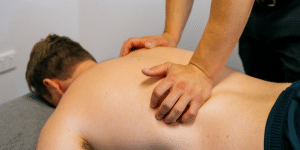Why is foam rolling a good idea?

What is it?
Foam rolling is a form of self-myofascial release/massage where you expose muscular regions to pressure using your bodyweight.
How does it work?
It is relatively unclear how it works, however current views suggest it is a neuropsychological mechanism of pain inhibition rather than a physical lengthening of tissues.
Does it work?
Post-exercise
A recent study suggests that using a roller 20 minutes after resistance training reduces muscle soreness and improves muscle activation and range of motion. See article below:
Learn More: Foam rolling for delayed-onset muscle soreness and recovery of dynamic performance measures
Pre-exercise
Studies have found that using a roller before exercise may extend workout time and volume and also improve range of motion during exercise whilst not negatively impacting performance.
Learn More: The effects of myofascial release with foam rolling on performance
How hard should we roll?
One study used pressures of between 32-55% of their bodyweight. In my experience foam rolling tends to be pretty brutal in the beginning and becomes more tolerable the more you practice. My suggestion is to start what you can tolerate and build up with the pressure.
How long should we roll for?
Anywhere between 2 to 5 minutes of foam rolling for each muscle group with less time being used prior to exercise and longer for post-exercise.
It is important to remember most of the evidence looking at foam rolling has been done on pain free subjects. Pain and tightness can sometimes be relieved in the short term by foam rolling but it can also worsen some musculoskeletal conditions.
In nearly all cases there is a reason for a muscle or joint being tight, stiff or sore and this may be because of biomechanical, strength, neural, posture, technique, or loading issues.
Just remember that everyone is different so just because foam rolling works for someone doesn’t mean it will work for you the same way. Therefore, seeing a physiotherapist is ideal if you are worried or wondering about your tight, stiff or painful joints and muscles and want to find the real cause of it!
For more information, please contact us here or book an online appointment






